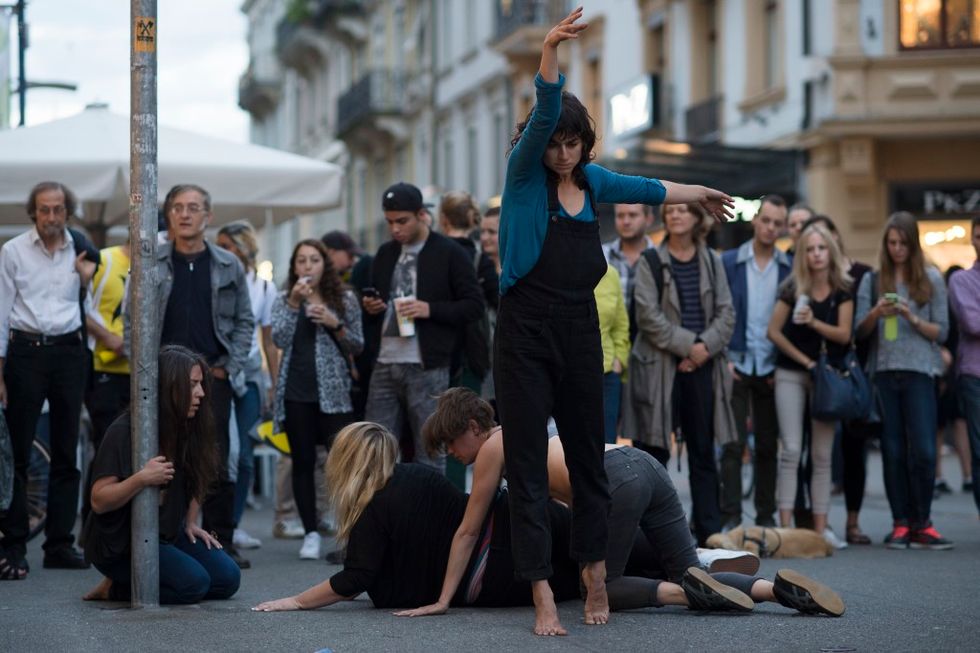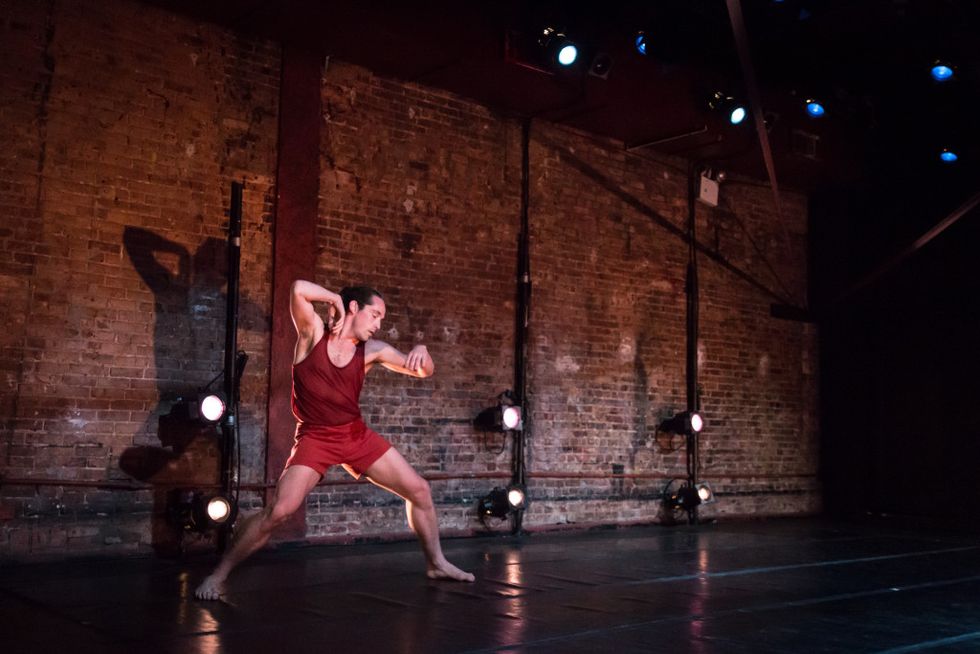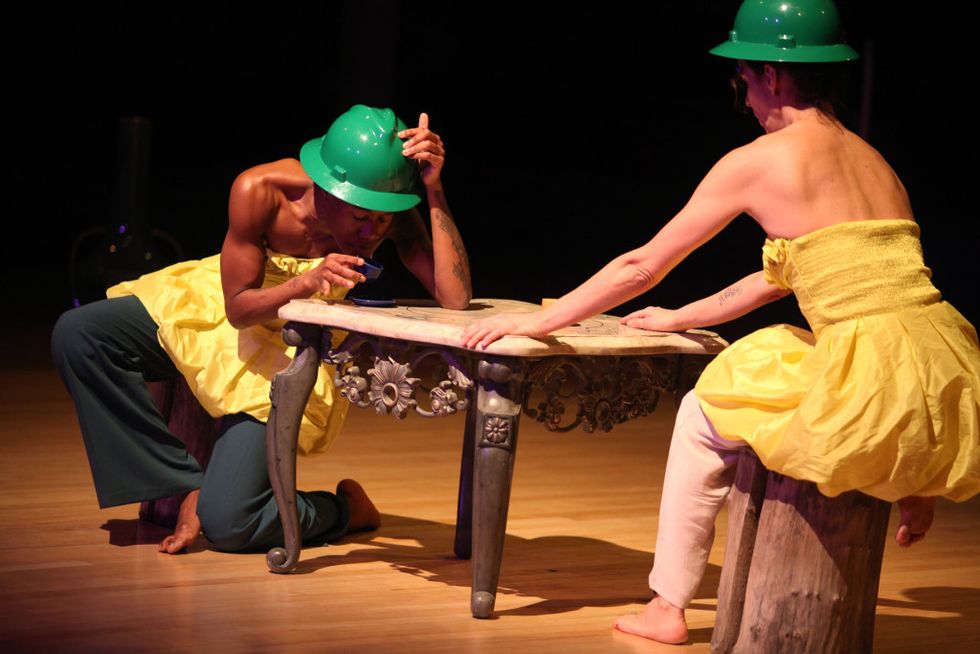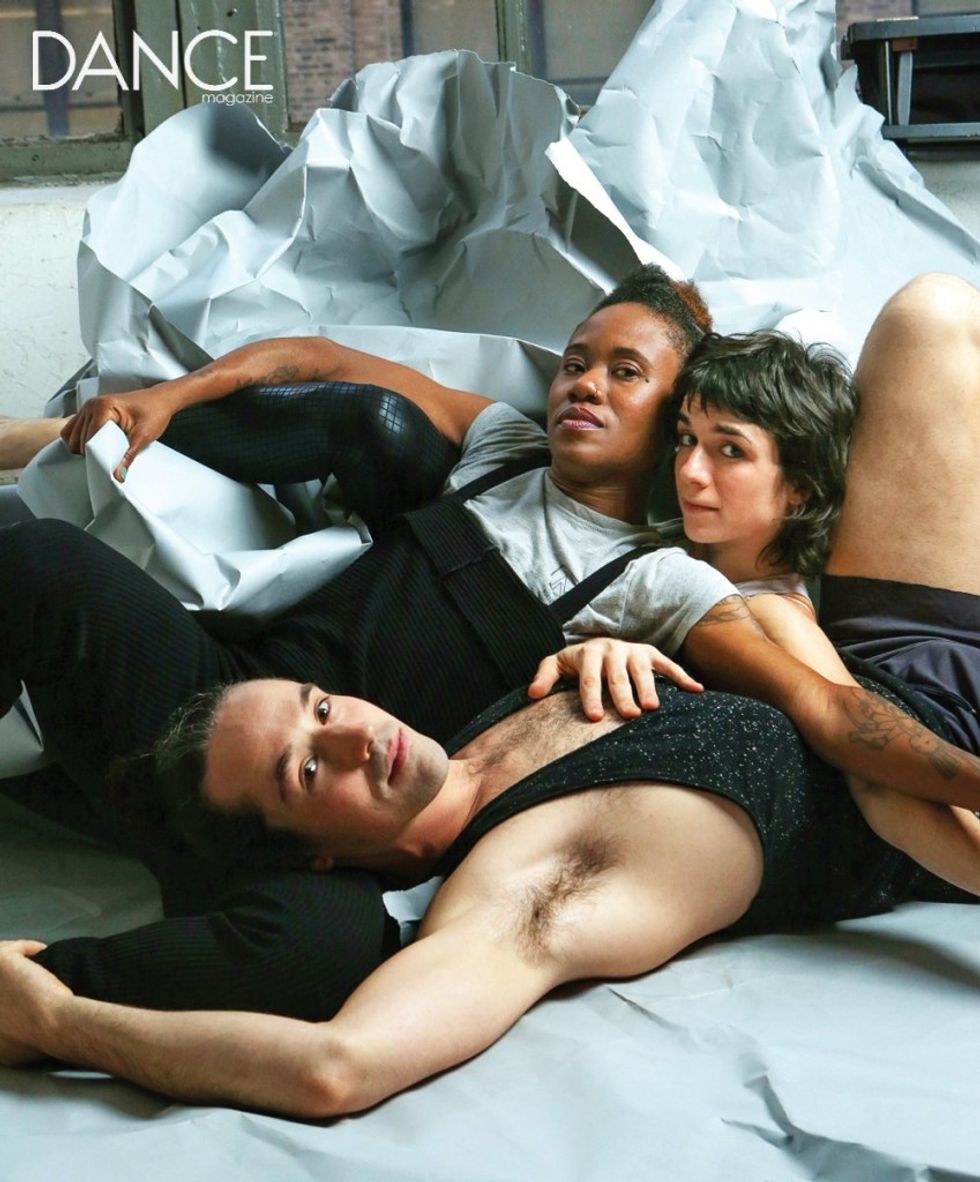Meet Three Freelance Stars of the Experimental Scene
On a Saturday in October, Omagbitse Omagbemi performed in Jon Kinzel’s COWHAND CON MAN, for the eighth time in two weeks, at Gibney Dance in Lower Manhattan. Three days later and a few miles uptown, she was lighting up a new role in Ralph Lemon’s Scaffold Room at The Kitchen. With cool delicacy in one work and searing drive in the other, she was at home in both, unequivocally herself even as she transformed.
While the freelancer’s path is precarious, with unsteady work and unpredictable income, some dancers make it look easy. Omagbemi, Stuart Singer and Molly Lieber have that in common. In recent years, they’ve become three of the most in-demand performers in New York’s experimental dance scene and beyond. Audiences relish watching them; choreographers seek them out. Strikingly individual and endlessly hard-working, they seem to bend the laws of space and time not only with their bodies but with their schedules, which accommodate many projects at once. Yet while they may be stellar multitaskers, they’re above all dedicated artists. Dance Magazine asked them how they do it.
Molly Lieber

luciana achugar’s The Pleasure Project. Photo by Alex Kangangi, courtesy achugar
“Strong” is an adjective that Lieber gets a lot, and for good reason: She dances like she can’t be messed with. Insatiably curious about what the body can do—“It’s kind of endless and awesome,” she says—she welcomes the influx of new ideas that comes with a project-to-project career. “It’s an amazing thing, bringing something new into the world, and I guess that’s why I’ve gravitated away from repertory work. I love experimental dance because we’re making it up as we go.”
Growing up in Pittsburgh, Lieber attended the Creative and Performing Arts High School and Pittsburgh Ballet Theatre School, then headed to Connecticut College with multiple career paths in mind. After graduation, she worked as a special education teacher in New York, a hiatus from dance that made her want to dance more. Making connections through classes and the occasional audition, she began performing and being seen around town.

Neil Greenberg’s This. Photo by Frank Mullaney, courtesy Greenberg.
While her strength gets noticed, so does her sensitivity to a range of aesthetics, whether dancing for other choreographers like Neil Greenberg, Melinda Ring and Donna Uchizono, or in the work that she makes collaboratively with her friend Eleanor Smith. Greenberg invited Lieber to work with him after seeing her perform with Anna Sperber and luciana achugar. “She was so committed to the moment,” he says of her role in Sperber’s austere duet, The Superseded Third. “Then I saw her again with luciana achugar”—in the much rowdier ritual-dance OTRO TEATRO—“and she was so completely in there, too, embodying in a very full way a very different kind of work.”
Considering her workload, Lieber, 32, has stayed remarkably injury-free. That might have to do with her thorough warm-up regimen and her ongoing study of Klein Technique, which has helped her find range and stability in her legs and spine. She isn’t immune to exhaustion, but, as she puts it, “I don’t mind effort and endurance. Enjoying the process, the effort—that makes this life a lot more enjoyable.”
Job advice: “If you’re moving to the city, think of it as a continuation of whatever you’ve been studying. Things like seeing work and taking class are part of your profession.”
See her dance with Maria Hassabi at the Museum of Modern Art, through March 20.
Stuart Singer

Gwen Welliver’s What a Horse! Photo by Jinyoul Lim, courtesy Singer.
Singer vividly remembers his first “dream job”: to join the Paul Taylor Dance Company. As a student at New York State Summer School of the Arts, he was introduced to Taylor’s buoyant, athletic technique. Having grown up as a “nerdy and overweight kid,” he says, it was a revelation. “That large-scale moving felt deeply empowering and expressive in a way I’d never experienced.”
Singer never pursued that dream, but he did spend four years with the Bill T. Jones/Arnie Zane Dance Company, leaving SUNY Purchase after his sophomore year to dance full-time. While he grew exponentially as an artist, he also got restless. “I wanted a range of experiences,” he says. “I think I perceived on some level that this long-term commitment to one choreographer wasn’t how I wanted to build my career.”

John Jasperse’s Within between. Photo by Ian Douglas, courtesy Jasperse.
Since leaving the company in 2008, Singer, 30, has definitely broadened his range, dancing with Wally Cardona, Beth Gill, John Jasperse, Joanna Kotze, Pam Tanowitz and Gwen Welliver, and in the epic five-hour opera Einstein on the Beach. Amid more creative concerns, he doesn’t underestimate the importance of a detailed calendar. “One of the biggest skills that gets called upon in this work is communication about schedule. I know it’s so dry and so boring, but it’s a huge part of my life.”
While Singer can be pragmatic, he can also be wild, a quality he tapped into for his role in Jasperse’s Within between, which earned him a 2014 Bessie for outstanding performer. Jasperse appreciates his fearlessness: “Not so much a physical fearlessness,” he says, “but a willingness to look awkward, to go into a space of potential discomfort with excitement about the unknown.”
Job advice: “Networking has this slimy reputation, but to me it’s just finding like-minded people. Reach out to people you want to work for, and tell them you want to work for them. The worst that happens is you’re exactly where you were when you started.”
See him dance in a play by Andrew Ondrejcak, with choreography by John Jasperse, March 10–19 at The Kitchen, and with Beth Gill, May 18–28 at the Chocolate Factory.
Omagbitse Omagbemi

With Simon Courchel in Jon Kinzel’s COWHAND COW MAN. Photo by Scott Shaw, courtesy Kinzel.
Of all she’s learned throughout her career, one epiphany stands out to Omagbemi: “It’s okay to be ugly.” That came to her while rehearsing with Wally Cardona for his 2009 Really Real. “He said, ‘You’re a beautiful dancer. Now show me something else,’ ” she recalls. “It shifted everything: how I see myself, how I see dance and choose to be in it.”
Maybe that explains the depth and nuance of her dancing, which has caught the attention of everyone from Vicky Shick, whose ornate works she’s graced since 2011, to the creative team of Sleep No More, the popular immersive theater show in which she played Lady Macbeth. “There’s an inherent drama in whatever she does, but it’s not overdone,” says Shick. “She has this pared-down elegance and this natural, unforced flamboyance.”
Omagbemi, 42, grew up in Silver Spring, Maryland, and began dancing relatively late, at 16. After dabbling in fashion merchandising at Radford University, she majored in dance at Montclair State University and moved to New York. (Known among friends as a “fashion icon,” she’s still serious about clothes.) She says that while she’s always thought about joining a company full-time (“it seems simpler”), she feels inspired by everyone she’s worked with, an illustrious group that’s only grown since 2012, when she won a Bessie for sustained achievement in the work of Keely Garfield, David Gordon, Ralph Lemon, Urban Bush Women and others.

Keely Garfield’s Twin Pines. Photo by Julieta Cervantes, courtesy Garfield.
Nursing some aches and pains last fall, Omagbemi was considering a vacation—and potentially bigger changes: “Sometimes you have to reassess. How long can I actually do this?” Europe has been on her mind; she recently auditioned for Cullberg Ballet in Sweden. But for now she’s staying stateside, in a community she’s glad to be part of. “As crazy and competitive as New York is,” she says, “people are really supportive.”
Job advice: “It’s not easy, but you’ve got to talk about money. When I start a new project, I try to ask right at the beginning about compensation. If someone can’t pay, that’s okay, but they need to tell me so it can be my decision.”
See her dance with Vicky Shick, April 14–16 at Danspace Project, and Heather Kravas, April 27–30 at the Chocolate Factory.
Tricks of the Trade
Lieber, Omagbemi and Singer discuss three pillars of freelance life.
On side jobs
Singer: I always tell my students: Get a skill you can get paid for, some way to make money outside your dancing that doesn’t make you insane. For me, when I started freelancing, it was part-time bookkeeping. Now I teach dance at Princeton and still do a bit of bookkeeping. Having other work gives me more freedom to be selective about the projects I take on.
On getting work
Omagbemi: I’ve been lucky in that people have seen me perform and asked me to work with them. I approach people, too, because for some reason they might think you’re not interested. I still audition. I hate doing it, but that’s how I got Sleep No More. It helps if you have friends in the company. Honestly, I can’t say I’ve gotten a job from an audition where the people didn’t know me.
On self-care
Lieber: It can be expensive, but I try to get body work every two or three weeks, mostly Zero Balancing with Barbara Mahler, and occasionally a massage. I should get acupuncture, but I’m scared of needles.




